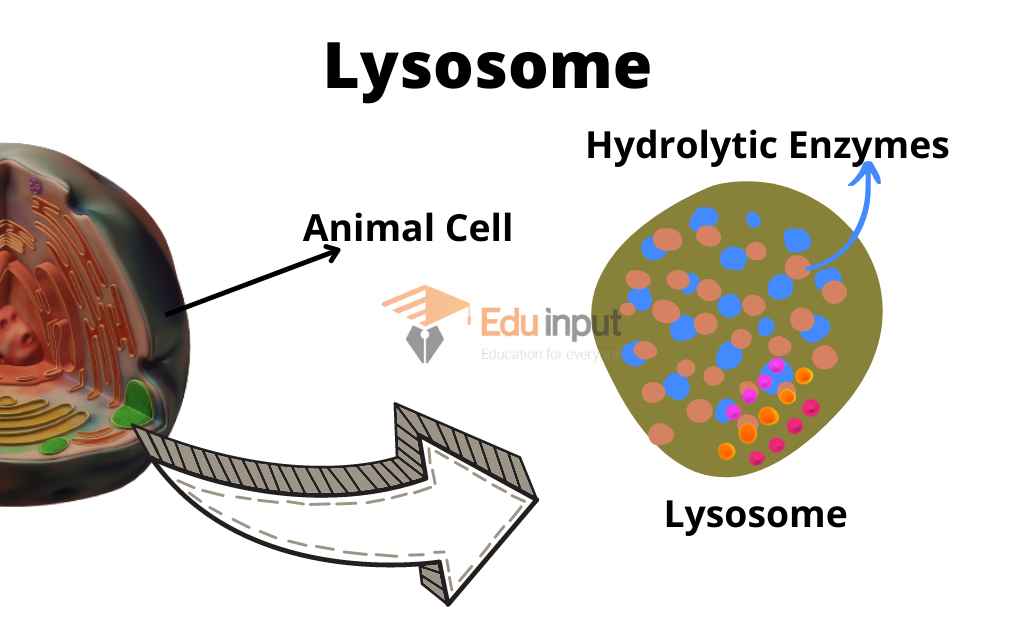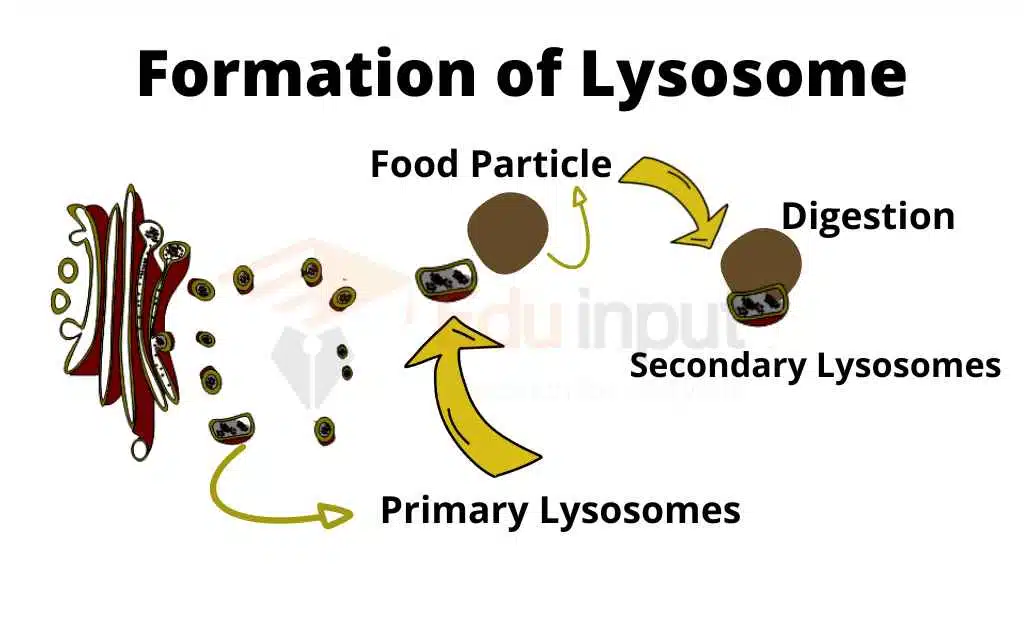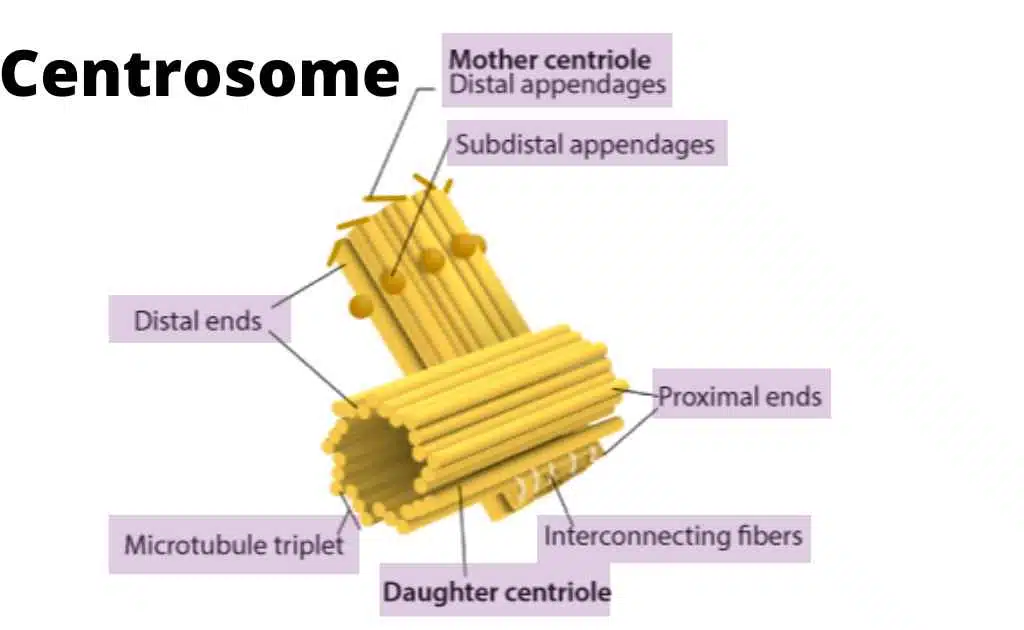Lysosome- Discovery and Formation of Lysosome
The lysosome is a membrane-enclosed bag of hydrolytic enzymes present in the cytoplasm. The cell uses lysosomes to digest biological molecules. They are capable of breaking down many types of biomolecules.
The lysosomal enzymes can hydrolyze proteins, polysaccharides, fats, and nucleic acid. These enzymes work best in an acidic environment at about pH 5.
The lysosome is a specific type of highly acidic organelle. This means that it must be protected from the rest of the interior of the cell. It is therefore a compartment surrounded by a membrane that stores the digestive enzymes that require this medium at low acidic pH.
Discovery of Lysosome
In 1949, Christian de Duve was attempting to discover exactly how insulin was acting on liver cells. He used an enzyme called glucose-6-phosphatase as a control for his experiment. What he discovered was that the enzyme had clumped together into smaller particles than normal and it did not seem to be conducting its usual enzymatic activity.
De Duve then hypothesized that there were organelles inside of the liver cell that was destroying things in the cell which made them unavailable for further chemical reactions or study. As you might imagine, these special organelles are now known as lysosomes.
Structure of Lysosome
The proteins of the inner surface of the lysosomal membrane have three-dimensional conformations that protect bonds of lysosomal protein from enzymatic attack. Thus the lysosomes themselves are spared from self-destruction. This sac contains several hydrolytic enzymes like acid phosphatase.

Formation of Lysosome
Rough Endoplasmic Reticulum synthesizes the hydrolytic enzymes. These enzymes are then transferred to a Golgi apparatus for further processing. It may be designated for use in lysosomes, endosomes, or the plasma membrane. Lysosomes arise by budding from the trans face of the Golgi apparatus.
Formation of Primary Lysosomes
The enzymes of the lysosomes are synthesized by ribosomes. Then they are transferred to the Golgi apparatus by RER. These enzymes are further processed in the Golgi apparatus. They are budded off as Golgi vesicles. These vesicles are called primary lysosomes.
Formation of Secondary Lysosomes
Secondary Lysosomes are formed by two methods Lysosomes protect the body against invading organisms. They also engulf the food particles. The foreign little germ or food) fuses with the primary lysosomes to form secondary lysosomes.
In secondary lysosomes, enzymes digest food particles. Sometimes, under some abnormal conditions like starvation or normal physiological conditions, the primary lysosomes engulf the parts of the cell. It digests these parts and releases energy.
The lysosomes that eat parts of its cells are called autophagosomes. These autophagosomes are also secondary lysosomes.

Functions of Lysosomes
1. Intracellular Digestions:
Lysosomes function in intracellular digestion in different conditions. Amoeba and many other protozoa engulf smaller organisms or other food particles by phagocytosis. The food vacuole is formed. The lysosome is fused with a food vacuole. Its enzymes digest the food.
2. Role in the defense of the body:
Some human cells carry out phagocytosis. These cells are known as macrophages. These cells defend the body by destroying bacteria and other invaders.
3. Autophagy:
Lysosomes also use their hydrolytic enzymes to recycle the organic material of cells. This process is called autophagy. Lysosome engulfs another organelle or a small part of cytosol. The lysosomal enzymes break the ingested material. Thus the organic monomers are returned to the cytosol for reuse.
4. Programmed destruction of cells:
There are programmed destructions of the cell by their lysosomal enzymes in many organisms. This destruction is important in the development of many organisms. Lysosomes destroy the web between the fingers of human embryos.
Lysosomes and Human Diseases
Many storage diseases affect lysosomal metabolism. In a storage disease, the lysosome lacks one of the hydrolytic enzymes. The lysosomes are filled with indigestible substrates. Thus these substances interfere with other cellular functions. There are the following diseases:
Pompe’s Disease:
In Pompe’s disease, a lysosomal enzyme needed to break down the polysaccharide is absent. It occurs due to mutation Therefore, the liver is damaged by the accumulation of glycogen.
Sach’s disease:
In this case, a lipid-digesting enzyme is missing. Therefore, the brain is damaged by the accumulation of lipids in the cells.
Frequently Asked Questions-FAQs
What is the main function of Lysosomes?
Lysosomes primarily function to digest components of the cell and to degrade the material coming from outside.
Where is the lysosome most abundant?
Lysosomes are mostly present in disease-fighting cells as in White blood cells.
Do lysosome have DNA?
No, unlike mitochondria and chloroplast, Lysosomes do not have DNA.
Why are enzymes acidic in nature?
Lysosomes are acidic, as it contains digestive enzymes and they need an acidic environment to perform efficiently.







Leave a Reply